List of 7 Oldest Caves in India
1. Bhimbetka Rock Shelters
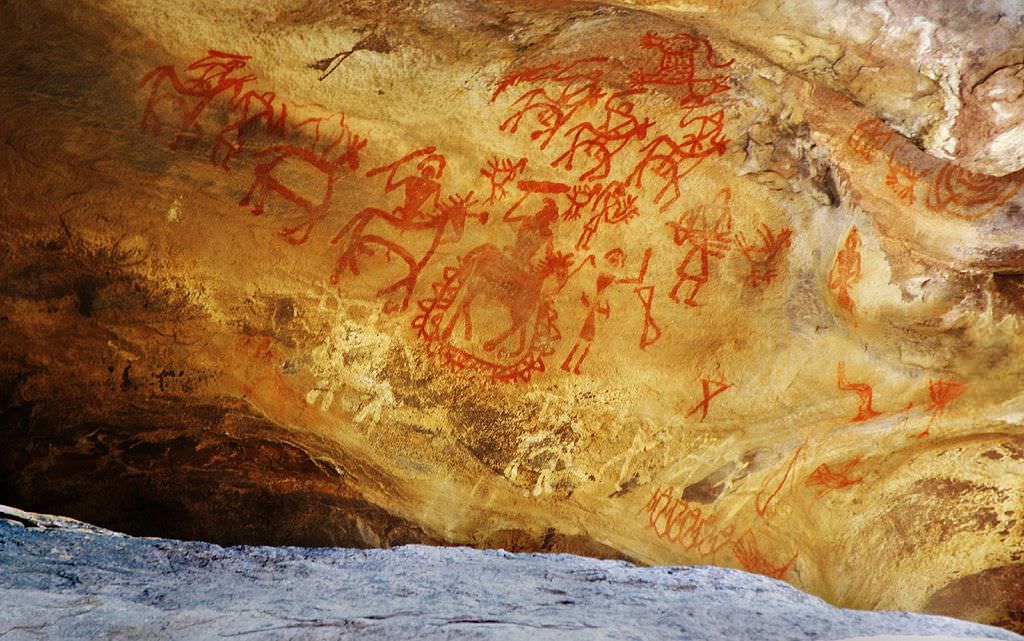
The Bhimbetka Rock Shelters in Madhya Pradesh are among the oldest prehistoric sites in India, featuring rock paintings that date back as early as 30,000 years ago during the Upper Palaeolithic period. This UNESCO World Heritage site offers a vivid chronicle of early human life, including scenes of hunting, dancing, rituals, and daily activities depicted with natural pigments. The site encompasses more than 750 rock shelters, reflecting the evolution of human artistry across eras.
2. Barabar Caves

Located in Bihar, the Barabar Caves are the oldest known surviving rock-cut caves in India, dating to the 3rd century BCE during the Maurya Empire. These caves, primarily used by the Ajivika sect, feature highly polished granite interiors and inscriptions from the time of Emperor Ashoka. Notable caves include Sudama and Lomas Rishi, which are characterised by their advanced architecture and “Mauryan polish”. The craftsmanship of the Barabar Caves influenced subsequent rock-cut cave architecture in India, including Buddhist and Hindu cave temples.
3. Jogimara Caves
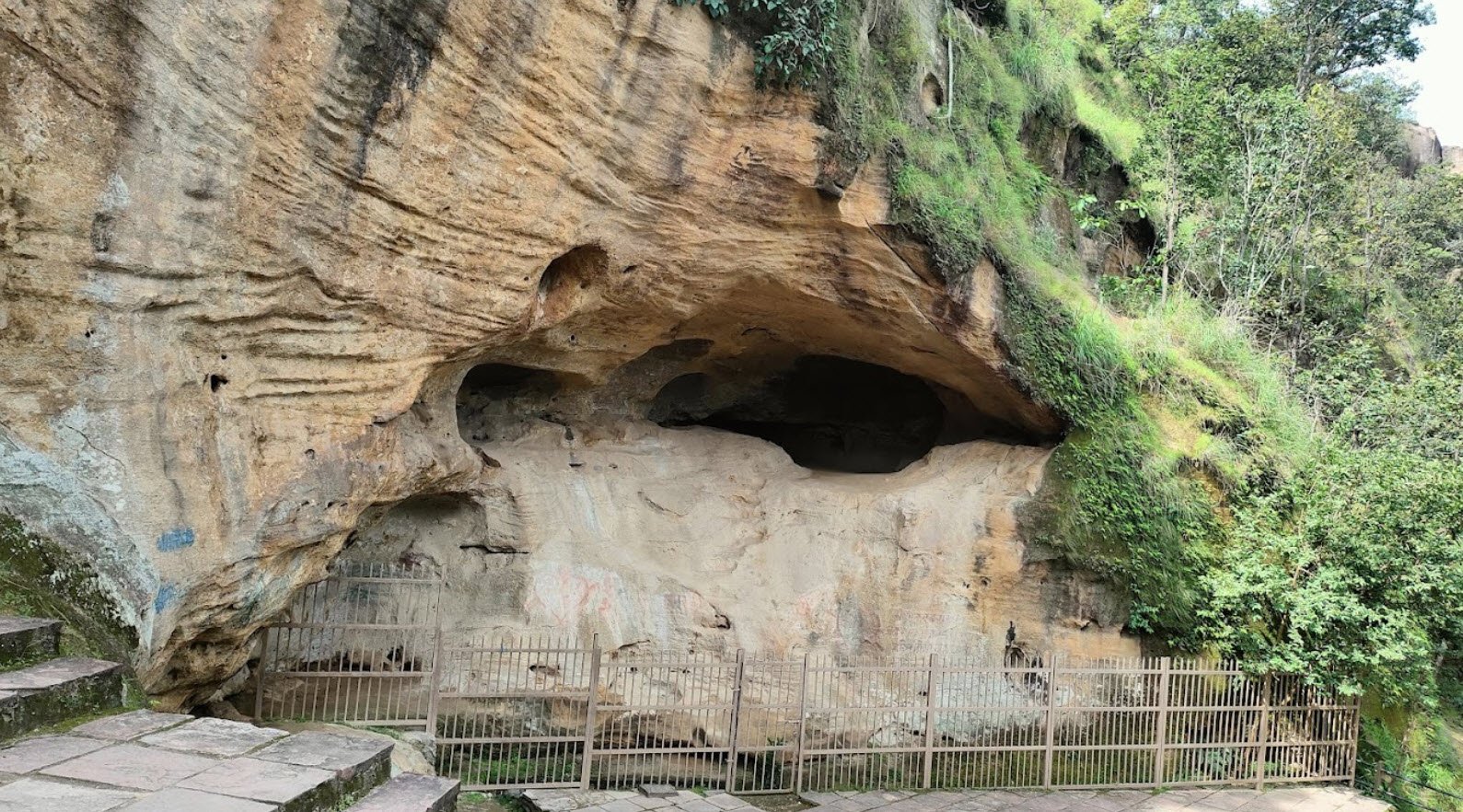
The Jogimara Caves, located in Chhattisgarh, are unique for being among the earliest non-religious painted caves in India, dating back to between the 3rd century BCE and the 1st century CE. Unlike other ancient caves that primarily reflect religious themes, Jogimara’s paintings depict lively and secular scenes: daily life, animals, men and women, and hints of theatre performances. The lime-plastered walls boast paintings in red, yellow, black, and white, accompanied by ancient Magadhi and Brahmi script inscriptions.
4. Ajanta Caves

Ajanta Caves, located in Maharashtra, showcase monumental Buddhist art and monastic architecture from the 2nd century BCE to the 5th century CE. Renowned worldwide for their intricate murals and sculptures, these 30 rock-cut caves were developed in two distinct phases corresponding to major Buddhist influences—Hinayana and Mahayana. The paintings primarily illustrate scenes from the Jataka tales, Buddha’s life, and elaborate depictions of court life, landscapes, and animals.
5. Karla Caves
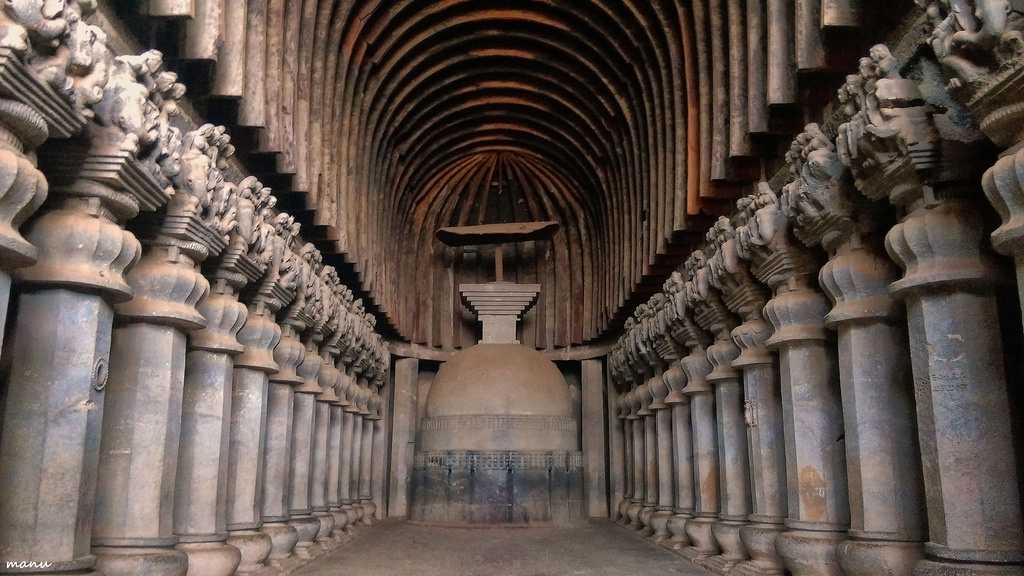
The Karla Caves, carved in Lonavala, Maharashtra, date from the 2nd century BCE to the 5th century CE and are revered for housing the largest surviving rock-cut prayer hall (chaityagriha) in India. Dedicated mainly to Buddhism, these caves feature imposing columns, a stunning wooden roof, intricate carvings, and a prominent stupa. Built through centuries of collective patronage and effort, Karla’s design reflects both simplicity and grandeur.
6. Ellora Caves

The Ellora Caves, also located in Maharashtra, demonstrate religious tolerance and syncretism, with Buddhist, Hindu, and Jain monuments crafted between the 6th and 10th centuries CE. These 34 caves are acclaimed for their architectural sophistication and vast artistic spectrum, including the awe-inspiring Kailash Temple—a monolithic rock-cut temple dedicated to Shiva.
7. Elephanta Caves

The Elephanta Caves, situated on Elephanta Island near Mumbai, were created between the 5th and 9th centuries CE. These rock-cut complexes feature prominent Hindu temples dedicated to Shiva, alongside Buddhist caves and dilapidated murals. Notably, the monumental Trimurti—a three-headed sculpture of Shiva—remains a highlight of Indian rock-cut art.
Which Is The Largest Cave In India?

The title of India’s largest cave system belongs to Krem Liat Prah, located in the Jaintia Hills of Meghalaya. This impressive natural limestone cave is the longest on the Indian subcontinent, with a surveyed length stretching for approximately 30.96 kilometres. Meghalaya is globally famous for its extensive and complex cave networks, and Krem Liat Prah stands out for its vast, maze-like passages and spectacular underground geological formations.
Which Cave Paintings Are More Than 10,000 Years Old In India?

The most ancient cave paintings in India, dating back over 10,000 years, are found at the Bhimbetka Rock Shelters in Madhya Pradesh. This UNESCO World Heritage site is an extraordinary repository of prehistoric art, with some of the earliest paintings estimated to date back as far as 30,000 years to the Upper Palaeolithic period. The artwork from the Mesolithic period (around 10,000 BCE) prominently depicts scenes of hunting, dancing, and various animals like bison, deer, and elephants.
What Are The Oldest Caves In The World?
The Sudwala Caves in South Africa are carved into Precambrian dolomite rock, which is approximately 3.8 billion years old, making it the oldest rock in the area. However, in terms of the oldest known and dated open cave system, the Jenolan Caves in Australia are considered the record holder. Scientific dating of the clay found within the Jenolan Caverns suggests they have been actively forming for at least 340 million years, dating back to the Carboniferous period.
What Is The Second-Longest Cave In India?

The second-longest cave system in India is the Belum Caves, located in the Nandyal district of Andhra Pradesh. With a surveyed length of 3,229 meters (about 3.2 kilometres), Belum is the longest cave system in the Indian plains. This natural underground wonder is known for its spacious chambers, long passages, and remarkable speleothems, including stunning stalactite and stalagmite formations.
India’s Ancient Underground Marvels: A Journey Through the 7 Oldest Caves
India, a land steeped in history and culture, is home to a remarkable collection of ancient caves that stand as testaments to the artistic and engineering prowess of its early inhabitants. From prehistoric rock shelters adorned with paintings to meticulously carved monolithic temples, these subterranean wonders offer a unique window into the subcontinent’s rich past. Here, we delve into a list of seven of the oldest caves in India, each with its own unique story and significance.
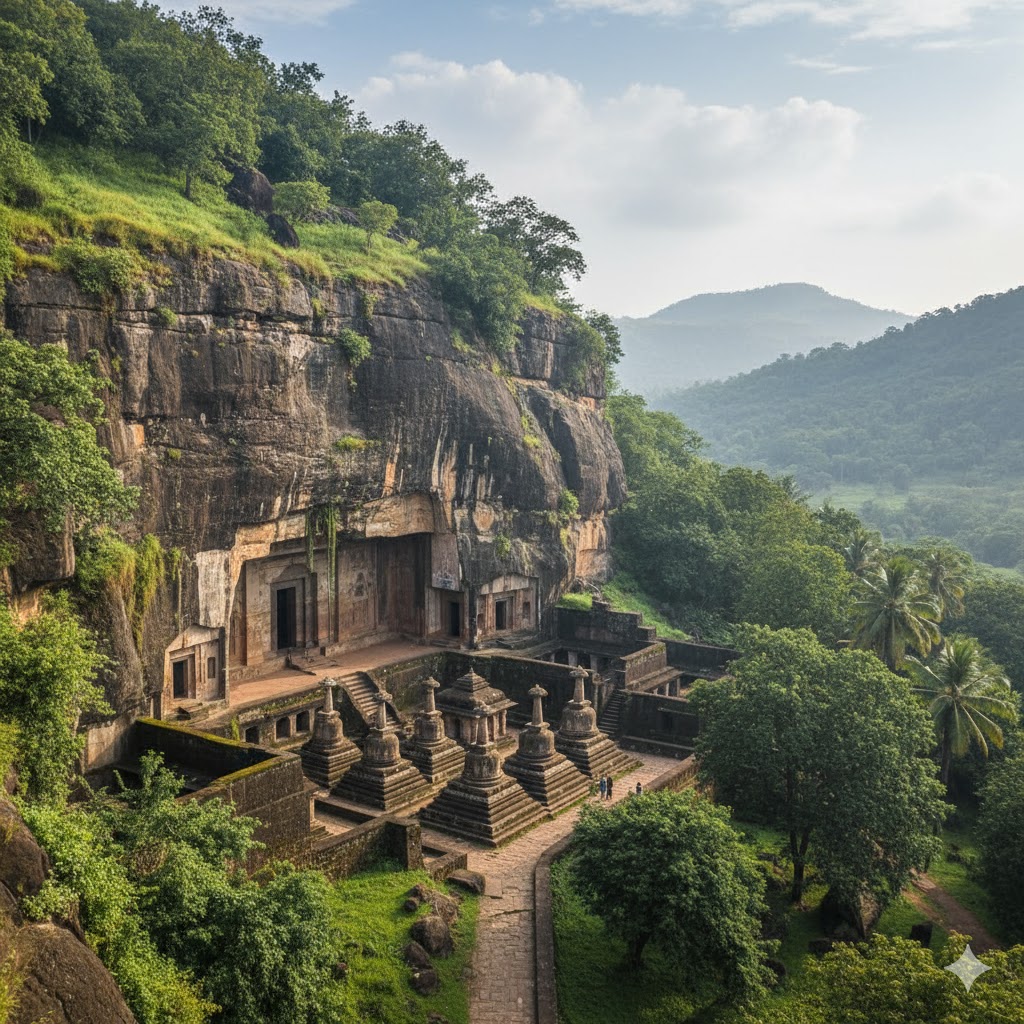
Nestled in the hills of the Western Ghats near Lonavala, the Bhaja Caves are a group of 22 rock-cut Buddhist caves dating back to the 2nd century BCE. These caves are significant for their early Hinayana Buddhist architecture. The most prominent feature is the large chaitya (prayer hall), which contains a stupa and has a horseshoe-shaped entrance. The viharas (monasteries) at Bhaja are simple in their design, reflecting the ascetic lifestyle of the monks who resided there.
Udayagiri and Khandagiri Caves, Odisha (2nd Century BCE)
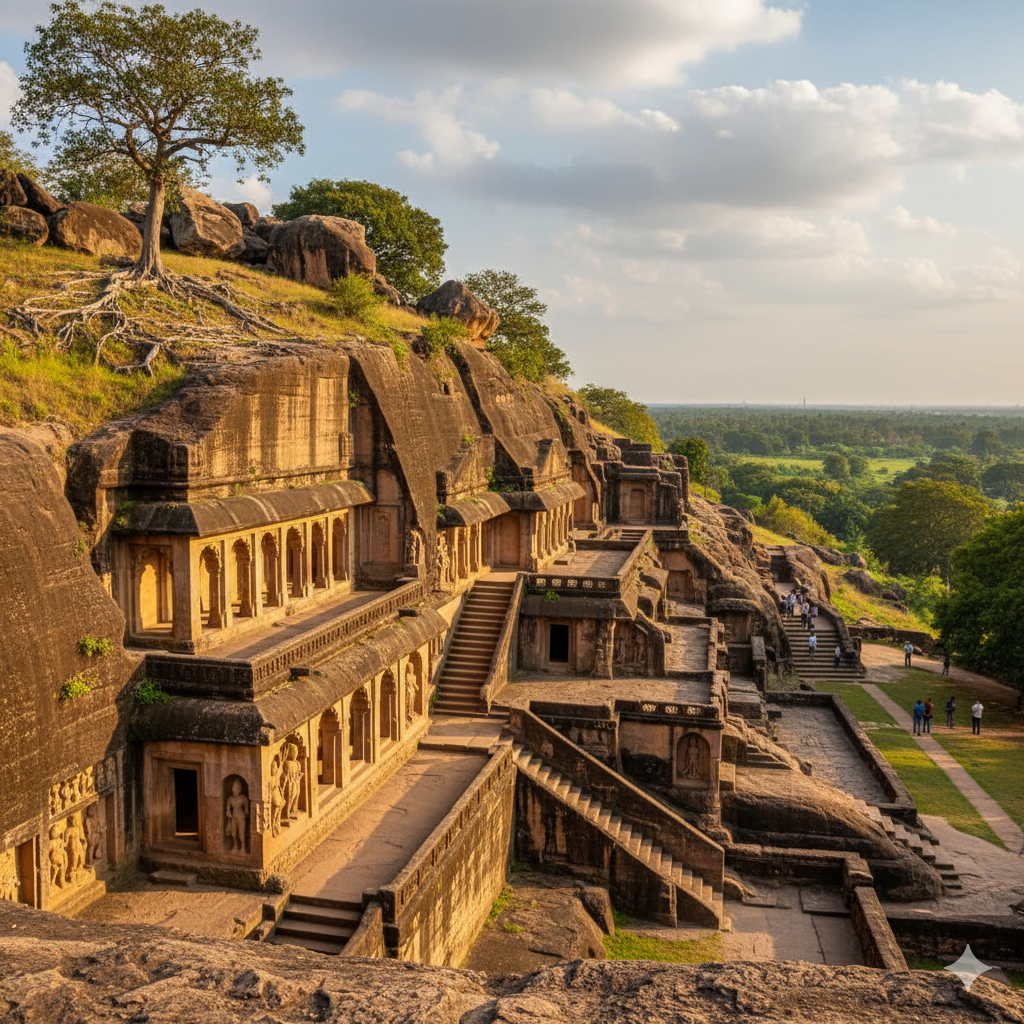
Located near Bhubaneswar, the Udayagiri and Khandagiri Caves are a complex of rock-cut shelters that were carved during the reign of King Kharavela of the Mahameghavahana dynasty in the 2nd century BCE. These caves were primarily intended for Jain ascetics. The Udayagiri caves, in particular, are famous for their narrative sculptures and inscriptions, with the Hathigumpha (Elephant Cave) inscription providing a detailed account of King Kharavela’s reign.
Pandavleni Caves, Maharashtra (1st Century BCE to 3rd Century CE)
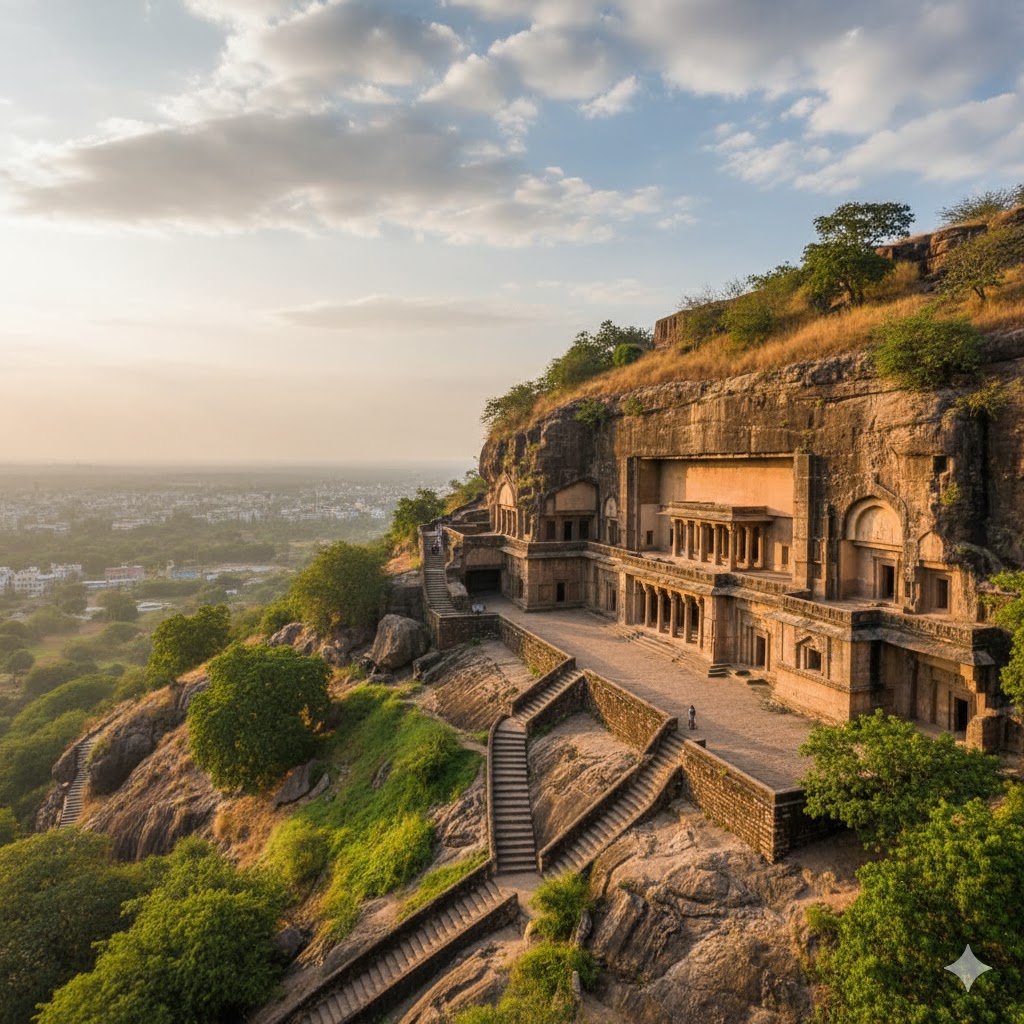
Also known as the Nashik Caves, the Pandavleni Caves are a group of 24 rock-cut Buddhist caves that were carved between the 1st century BCE and the 3rd century CE. These caves were built under the patronage of various rulers, including the Satavahanas and the Western Kshatrapas. The inscriptions found in these caves have been crucial in understanding the political and social history of the region during that period. The caves feature a mix of simple viharas and more elaborate chaityas with impressive sculptures.
Bhaja Caves, Maharashtra (2nd Century BCE)
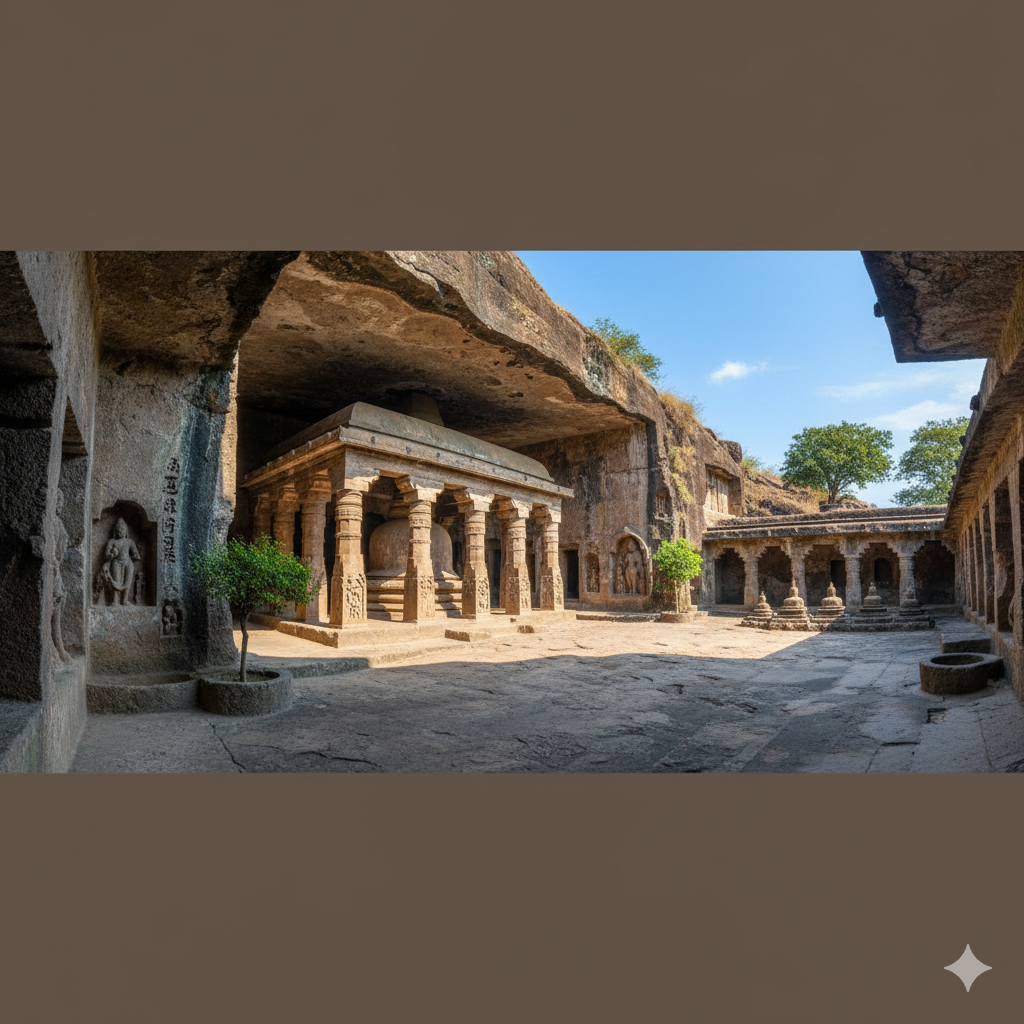
The Bhaja Caves in Maharashtra are a stunning example of early Buddhist rock-cut architecture, dating back to the 2nd century BCE. Here’s a quick overview of their historical and architectural significance:
🏞️ Location & Setting
- Situated near Lonavala in the Pune district, the caves are carved into a hillside about 400 feet above the village of Bhaja.
- They lie along an ancient trade route that connected the Arabian Sea to the Deccan Plateau, making them a key monastic stop for traveling monks.
🛕 Historical Importance
- Built during the Hinayana phase of Buddhism, the Bhaja Caves are among the oldest Buddhist cave complexes in India.
- They served as a residence and meditation space for monks and were never expanded during the later Mahayana phase.
🏛️ Architectural Features
- The complex includes 22 rock-cut caves, with the most prominent being Cave 12—a chaityagriha (prayer hall) featuring a large stupa.
- The caves also house several stupas, viharas (monastic cells), and intricate carvings, showcasing early Buddhist art and craftsmanship.
🏺 Cultural Legacy
- The site is protected as a Monument of National Importance by the Archaeological Survey of India.
- Its carvings and layout reflect the simplicity and spiritual focus of early Buddhist communities.